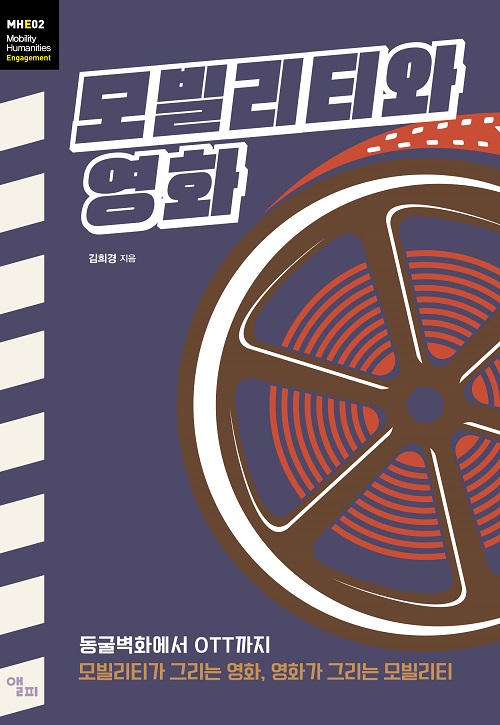From the Birth of Movie to Changes of Theatres
Mobile Movie, Mobility in Movies
Liberal Arts Book on Movie from New Angles
It is rarely known that the etymology of ‘movie’, just like that of ‘mobility’, is ‘movere’ meaning movement. This book reaffirms that movies, composed of words, actions and movements of people, are products of humans’ desires and expressions of mobility. Taking a cultural history approach, the author examines how static images were transformed into moving ones, why protagonists having stationed in one place hit the road (in road movie genre), and how audiences have changed their film-watching ways accordingly. The author explains in a more accessible and interesting way mobility(movement)-related themes – that can be projected as an abstract concept – by employing historical and scientific background information and anecdotes. The final chapter of the book, “Diasporic Mobility in Movies” is like a supplementary section reflecting historical moments through lens of movies.
The Curiosity of Mobility
Why do “almost all adults, just like children, love animated movies”? According to Imamura Taihei, Japanese animated film critic, it is “because of a fundamental curiosity and hope for moving images embedded deep in human minds.” The human desire to move static images led to the birth of movie. In this vein, the painting of a wild boar in Altamira cave paintings is the origin of animation. The book traces the creation and development of the modern form of movie, beyond the technical matter, to the mobility-related intellectual curiosity by shedding light on various artifacts and remains, anecdotes of experiments and inventions. That is to say, in the end, it was curiosity about movement common to humans that led to the birth of movie.
The Contents of Mobility and Movie
Chapter One, “Turing Static Images into Moving Ones” begins with the first-ever drawings of mankind before the advent of moving pictures. Traces of ancient people expressing mobility can be found on the cave wall murals of animals and mankind that appeared in Indonesia, Spain, and France. The book confirms universal human desires and expressions of mobility by examining the developments of techniques, and technologies expressing dynamic images. These cases include paintings of continuous movements drawn on pottery and tombs, as well as films and animations from Thaumatrope to Cinematograph.
Chapter Two, “Static Movies to Road Movies” analyzes the characteristics and representatives of road movies along with the meaning of “the road”. “Road” in road movies indicates not only the physical road but also represents the psychological and cultural historical connotations of the road. The author examines the typical rules and patterns of road movies in terms of their formulas, conventions, and icons.
Chapter Three, “From Theatres with Lean-Backing Seats to Lean-Forwarding Over-the-Top Media Services” overviews the historical developments of different forms of theatres ranging from ancient outdoor theatres, contemporary indoor theatres, multiplex theatres, to the current Over-the-top media services. Also, the chapter examines the meanings of theatres as well as changes in forms of and characteristics of audiences’ participations in movie-watching activities.
Chapter Four, “Diasporic Mobility in Movies” summaries the notion, history, and types of diaspora groups and introduces five types of diaspora movies. The author looks into forced migration, the connection between continents, and vertical exchange through colonies by analyzing the characteristics of diaspora depicted in diasporic mobility cinema.


